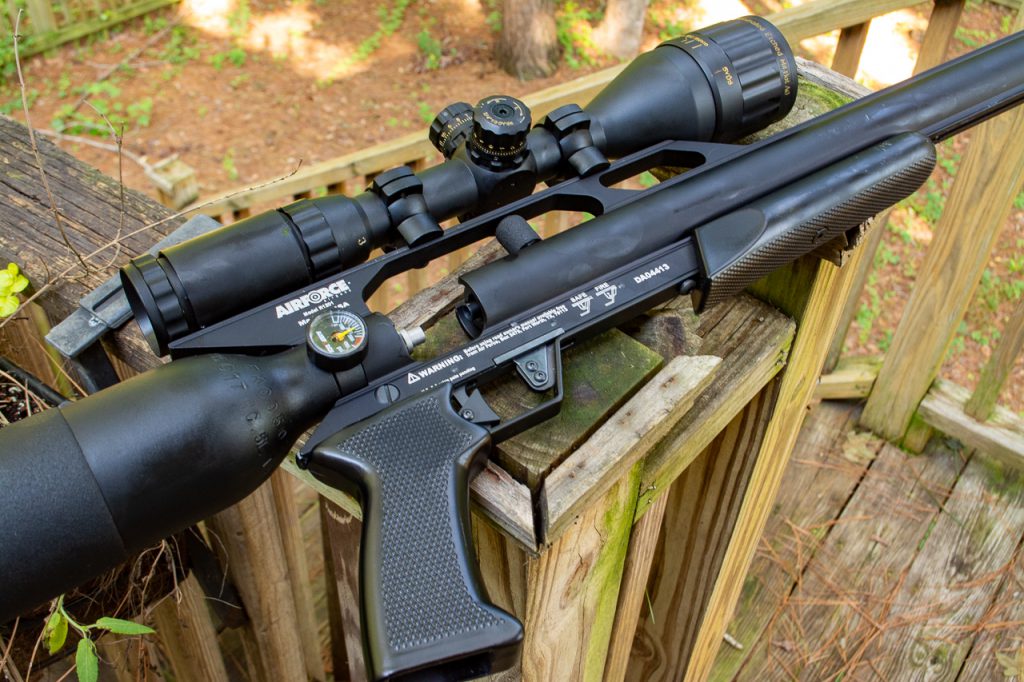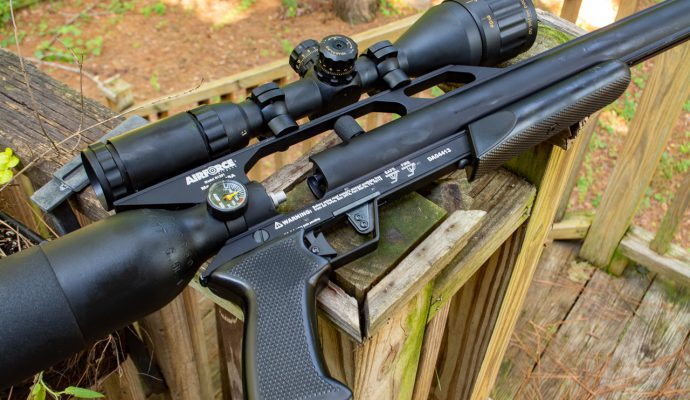
Airgunning has at least one thing in common with fire and brimstone shooting.
Gravity.
Sure, there are plenty of other similarities. In fact, airgun ballistics are subject to all the same rules of nature as centerfire projectiles, so the core principles like ballistic coefficients, drag, bullet drop, wind drift, and all the like apply to both worlds. The only real difference in the airgun universe is that these effects are more dramatic at shorter distances.
If you’re a geek like me, you might derive some joy from a basic understanding of the science behind ballistic performance. It’s not just book nerd knowledge. These principles, and the tools that support them, can help you do practical things like get first shot hits at longer distances because you’ve predicted the effects of gravity and wind on your pellet’s flight. So today, let’s do a quick review of some of the more important ballistic principles. Knowing those, you can use ballistic calculators to do all sorts of fun stuff.
To make use of ballistic calculators, you must become familiar with a handful of concepts. Let’s explore.
Ballistic Coefficient
Ballistic Coefficient (BC) is a measure of how easily a projectile moves through the air. Stated differently, you might say it enumerates how “slippery” a pellet is while in flight. A pellet with a high BC is more aerodynamic than one with a lower BC. In most cases, projectiles have a BC between zero and one although there are some projectiles in the centerfire world that can exceed one.
Gravity doesn’t care about ballistic coefficients, at least not directly. Whether something is slippery or not, gravity will act on it with equal measure to any other object. However, projectiles with high ballistic coefficients are said to “shoot flatter” and, in a sense, defy gravity. Why? The critical factor related to bullet drop is time. The longer an object is subject to the force of gravity, the more it will fall. A bullet with a high ballistic coefficient (more slippery) will get from point A to point B faster than one with more drag, so it’s subject to Newton’s epiphany for a shorter amount of time. Therefore, over the same distance, it drops less. It’s that simple.
Sight Height
Since every scoped rifle, air or centerfire, maintains an angular relationship between the bore and the scope line of sight, you must know the height of the crosshairs over the center of the bore. Since you’re not looking through the bore itself when you aim, you have to angle the scope down (or barrel up) to make sure that the two lines intersect at some desired point. In the airgun world, depending on caliber and need, you might set up your scope to intersect with the bore ten or 25 yards down range. To predict the math, you have to know how high the crosshair is over the bore as that impacts the severity of the angle between scope and bore. If your crosshair was six feet over the bore, you’d need a steep angle between rifle and scope for the line of sight and projectile path to meet 10 yards ahead. Depending on your setup, your sight height will likely fall somewhere between 1.5 and 2.8 inches, although that’s not a hard and fast rule.
Zero Distance
The zero distance also impacts down range pellet flight prediction. With a short zero, like five yards, the bore will have to be angled more steeply to lob the pellet into the scope’s line of sight over a shorter flight path. A longer zero allows a gentler angle of flight for the pellet to travel into the line of sight. The right zero distance depends on the job at hand and the flight characteristics of your rifle and pellet combination.
Atmospheric Conditions
Most ballistic software will want to know important atmospheric condition information like temperature, humidity, and pressure. Since the critical variable is the “thickness” of the air, different apps may ask for this in different ways. Some will want to know the current pressure while others may ask for current altitude above sea level and temperature.

A Real-Life Example
I’ve been shooting an AirForce Condor SS chambered in .25 caliber with a broad variety of pellets. One of the best performing pellets in that rifle has been the JSB Exact King 25.39-grain. When fired from the Condor SS, set at power level 8, the muzzle velocity averages 1,032 feet per second here where I live.
I’ve been using the ChairGun app from Hawke Sport Optics to tinker with ballistic calculations. Sadly, the company has elected to discontinue support for the product, so I’ll have to switch to a replacement. Using the ChairGun app, I can enter key information to predict performance of the JSB pellet using the AirForce Condor. The built-in pellet database in ChairGun shows that the JSB Exact King carries a ballistic coefficient of 0.0360. After entering velocity of 1,032 feet per second, sight height of 2.5 inches, bullet weight of 25.40 grains (populated from the database), zero distance of 25 yards, temperature of 85 degrees, and elevation of 35 feet above sea level, I get a table showing what will happen over the distance to target.
This app, and virtually any other ballistic app, also allows you to enter wind direction and velocity so you can calculate pellet drift over distance. In this example case, I entered a 10-mph wind coming from the three o’clock direction.
Once I had all the conditions, pellet, and atmospheric data entered, it was easy to develop firing solutions. For example, at 50 yards, this pellet, scope, and rifle combination will yield an impact point 0.11 inches below the point of aim unless I adjust turrets or hold over. At 100 yards, still a very reasonable distance for this .25 caliber Condor SS, we’re looking at a 10.44-inch drop. Or, I could make a 10.0 minute of angle scope adjustment and be right on the crosshairs. Fun stuff…

